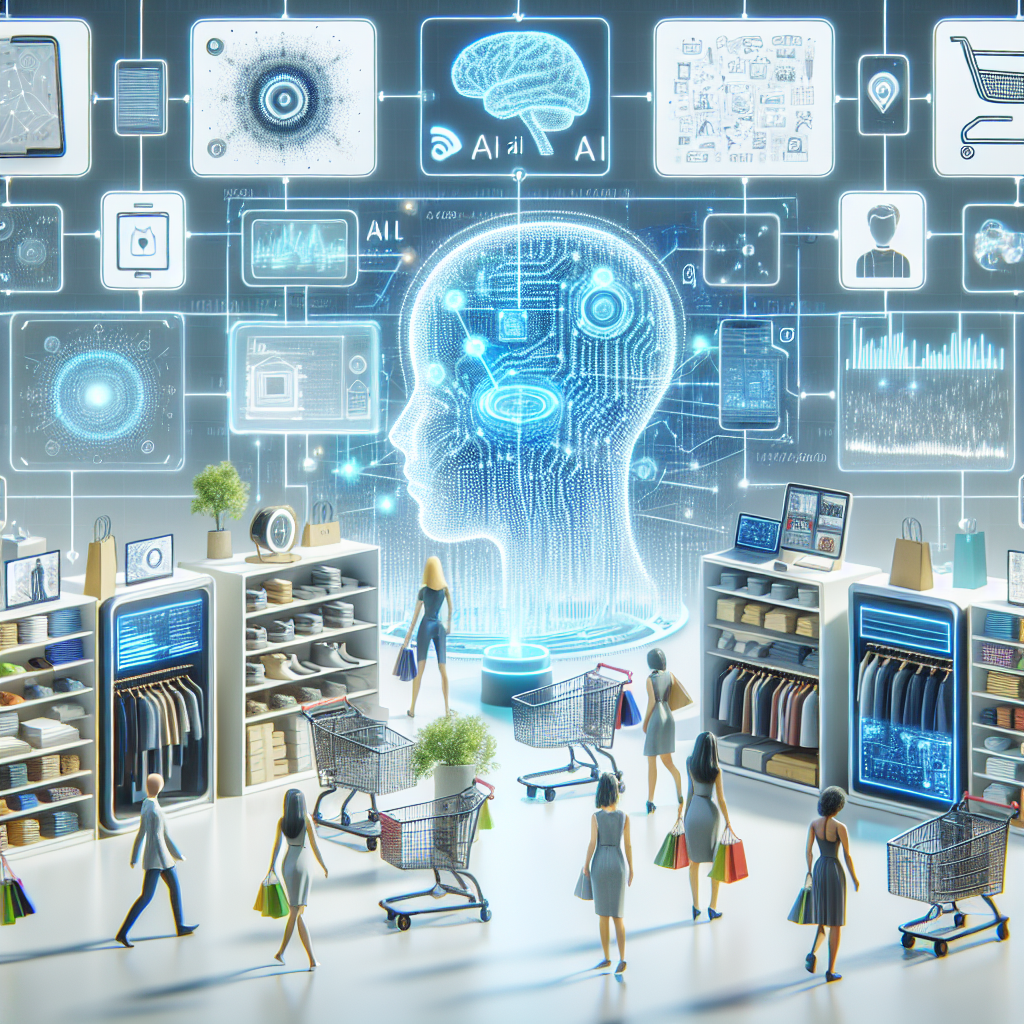Generative AI in Retail: Revolutionizing the Shopping Experience
In recent years, artificial intelligence (AI) has been transforming various industries, and the retail sector is no exception. Generative AI, a subset of AI that involves creating new content such as images, text, or even music, is revolutionizing the shopping experience for consumers and retailers alike. By leveraging generative AI technology, retailers can personalize their offerings, create innovative marketing campaigns, and improve customer engagement. In this article, we will explore the impact of generative AI in retail and how it is changing the way we shop.
Personalized Shopping Experience
One of the key benefits of generative AI in retail is its ability to personalize the shopping experience for consumers. By analyzing customer data such as browsing history, purchase behavior, and social media activity, retailers can use generative AI algorithms to recommend products that are tailored to each individual’s preferences. For example, a clothing retailer can use generative AI to create virtual try-on experiences for customers, allowing them to see how a particular outfit will look on them before making a purchase.
Additionally, generative AI can be used to create personalized marketing campaigns that target specific customer segments. By analyzing data on past purchases and customer interactions, retailers can generate targeted ads and promotions that are more likely to resonate with their audience. This level of personalization not only improves the shopping experience for consumers but also helps retailers increase sales and customer loyalty.
Product Design and Development
Generative AI is also being used to revolutionize the product design and development process in retail. By analyzing trends in consumer preferences and market demand, retailers can use generative AI to generate new product ideas and designs. For example, a furniture retailer can use generative AI algorithms to create unique furniture designs based on customer feedback and market trends.
Generative AI can also be used to optimize the supply chain and inventory management processes in retail. By analyzing data on sales patterns and consumer demand, retailers can use generative AI algorithms to predict future trends and adjust their inventory levels accordingly. This helps retailers minimize stockouts and overstock situations, leading to improved efficiency and cost savings.
Enhanced Customer Engagement
Another key benefit of generative AI in retail is its ability to enhance customer engagement. By creating interactive and immersive shopping experiences, retailers can attract and retain customers in a highly competitive market. For example, a beauty retailer can use generative AI to create virtual makeup tutorials that allow customers to try out different looks before purchasing products.
Generative AI can also be used to create personalized chatbots that can assist customers with their shopping experience. By analyzing customer inquiries and interactions, retailers can use generative AI algorithms to generate responses that are tailored to each individual’s needs. This level of personalization helps retailers provide better customer service and improve overall satisfaction.
FAQs
Q: How does generative AI differ from other forms of AI in retail?
A: Generative AI is a subset of AI that involves creating new content, such as images, text, or music, while other forms of AI in retail focus on tasks such as data analysis, prediction, and automation.
Q: How can retailers benefit from using generative AI technology?
A: Retailers can benefit from generative AI technology by personalizing the shopping experience, creating innovative product designs, optimizing inventory management, and enhancing customer engagement.
Q: Are there any challenges associated with implementing generative AI in retail?
A: Some of the challenges associated with implementing generative AI in retail include data privacy concerns, technical complexity, and the need for skilled AI professionals.
Q: What are some examples of retailers using generative AI technology?
A: Some examples of retailers using generative AI technology include clothing brands creating virtual try-on experiences, beauty retailers offering virtual makeup tutorials, and furniture companies generating unique product designs.
In conclusion, generative AI is revolutionizing the shopping experience in retail by personalizing offerings, creating innovative designs, optimizing inventory management, and enhancing customer engagement. As retailers continue to adopt this technology, we can expect to see even more personalized and immersive shopping experiences that cater to the individual preferences of consumers.Generative AI is revolutionizing the shopping experience in retail by personalizing offerings, creating innovative designs, optimizing inventory management, and enhancing customer engagement. As retailers continue to adopt this technology, we can expect to see even more personalized and immersive shopping experiences that cater to the individual preferences of consumers.

